Affiliate links on Android Authority may earn us a commission. Learn more.
The CMF Phone 1's modular approach made tech fun again for me
Published onJuly 28, 2024
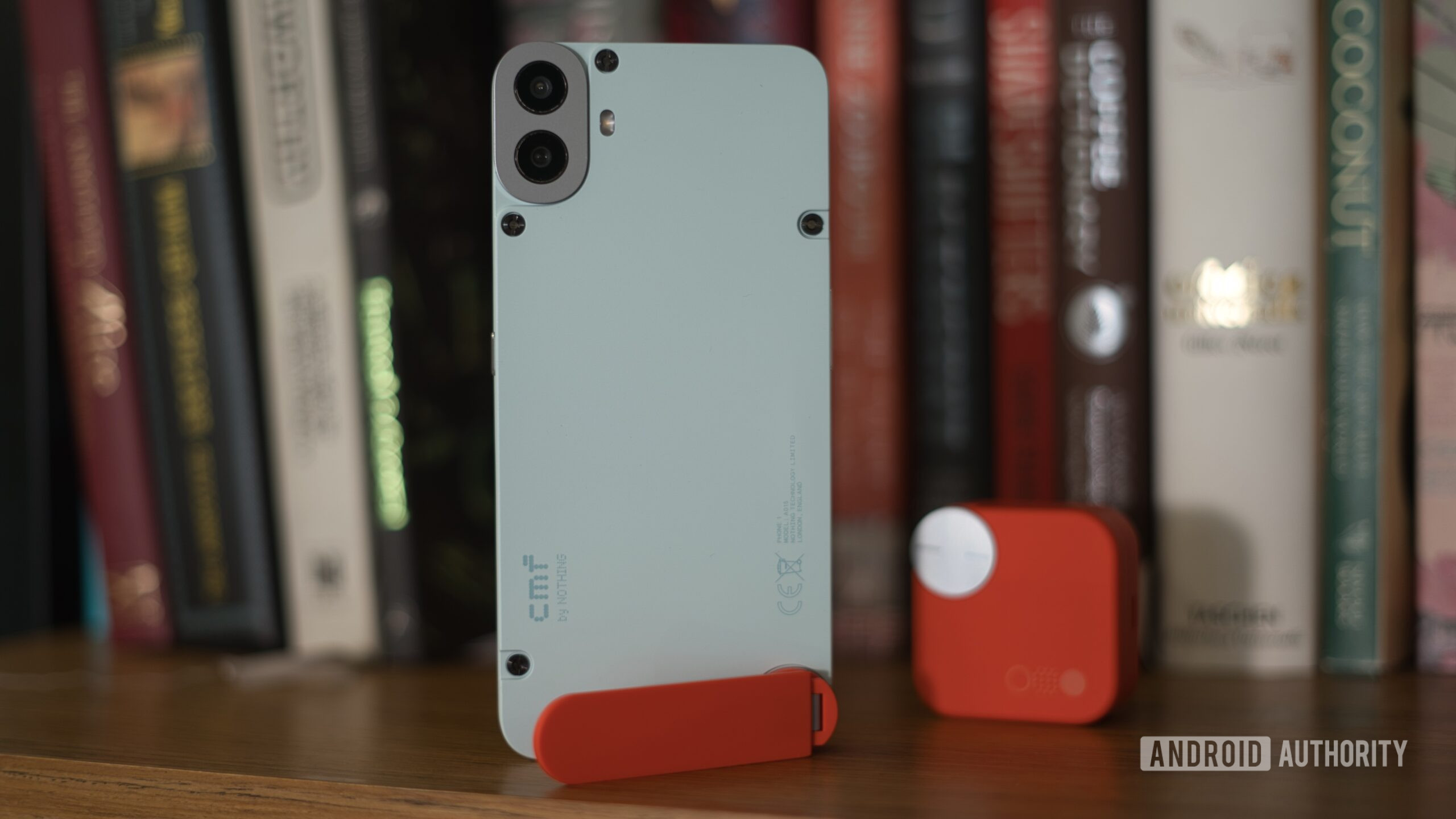
The pursuit of modularity in smartphones isn’t new. As far back as 2010, I remember being wowed by the Modu T and its jackets that added features like a 5MP camera or a power bank to the not-quite-smartphone. A few years later, Moto Mods were just as impressive with their ability to add a power Hasselblad camera, a mini projector, or a full-fledged JBL speaker to the back of the phone. However, while concepts like the Moto Mods, LG G5 Friends, Project Ara, or Phonebloks appealed to tinkerers and enthusiasts like me, the modular phone has been, by all measures, a failure.
CMF's approach to modular smartphones might just succeed where larger players failed.
But like fashion, most tech trends are cyclical in nature, and Nothing’s affordable sub-brand CMF has brought back modularity with its own spin on it. Can CMF win the tinkerer in me when even the best smartphone brands stumbled or failed? I think so.
A simpler approach to modular smartphones
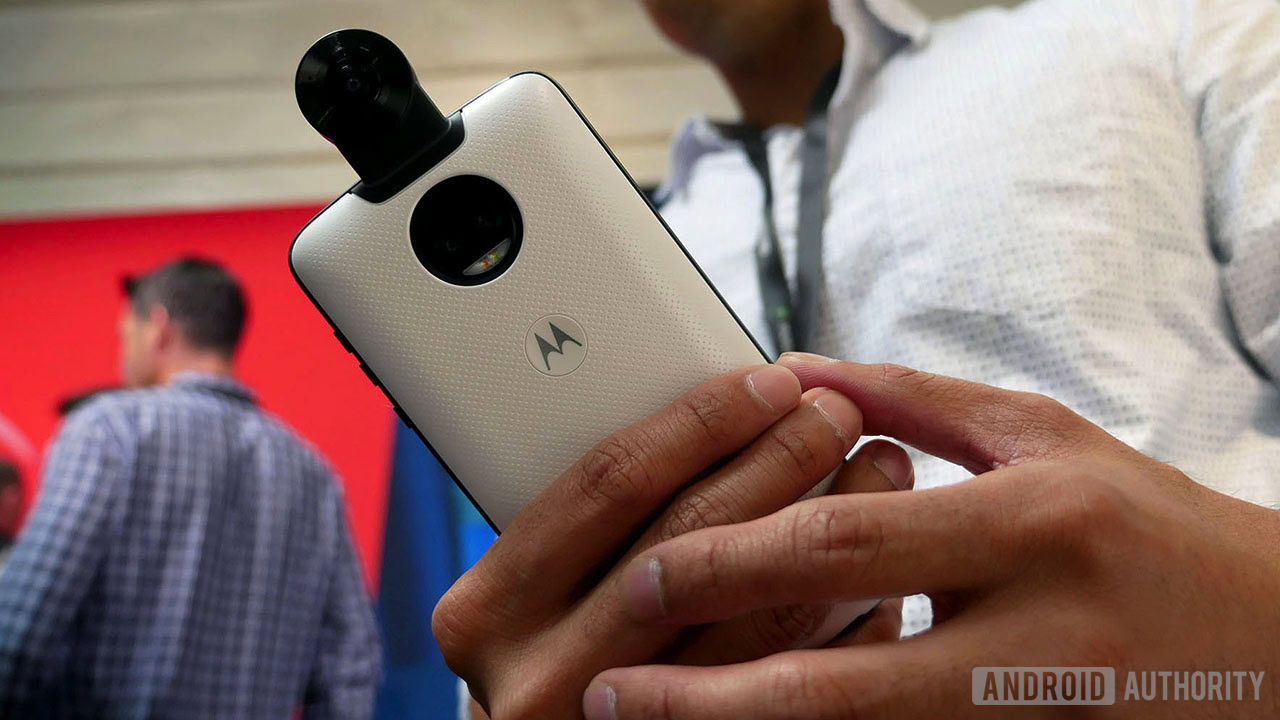
Getting customers to purchase an expensive accessory that might find occasional use and cannot work with any other smartphone is a tall ask.
What drew me to the CMF Phone 1 is that it doesn’t attempt to implement expensive electronic add-ons that would be more impractical to carry and use than if they were built into the phone. Instead, the company has adopted a decidedly low-tech approach to the problem. There are no pogo pin connectors here, nor are there any magnets or bespoke electronics. All of its accessories screw into the phone using a set of, well, screws.
The first lot of accessories includes basics like replaceable back panels, a kickstand, a wallet, and a lanyard. These are all accessories that can serve me daily and be left attached to the phone without worrying about constantly removing and safeguarding them. The CMF Phone isn’t modular in the same vein as adding a new bespoke projector to a phone. Still, everyday usability trumps gee-whizz technical showcases, especially for an affordable smartphone that doesn’t need to pretend to do more than it can.
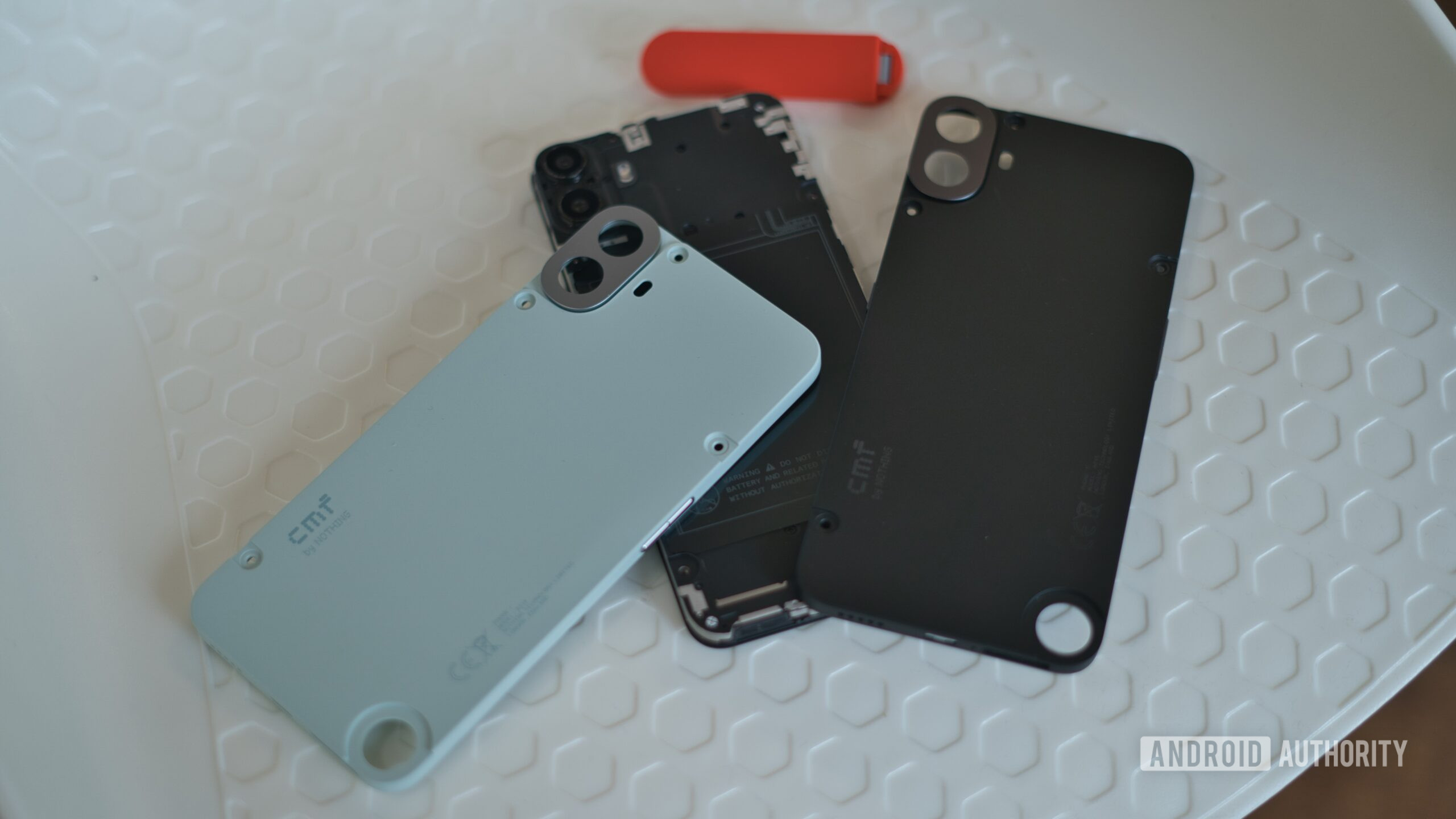
It also helps that the accessories are extremely easy to install. I got my hands on a replacement back panel and a kickstand for my black CMF Phone 1. The company thoughtfully ships you everything you could need to install these, including a set of screws and a micro screwdriver, and it took me mere minutes to install a replacement shell. The included set of screws with the teal replacement back was color-matched silver, but I opted to keep the original black screws for a more industrial look. I also screwed in the orange kickstand accessory to complete the spunky look. CMF offers enough here to make this already distinctive-looking phone your own.
A world of options to explore
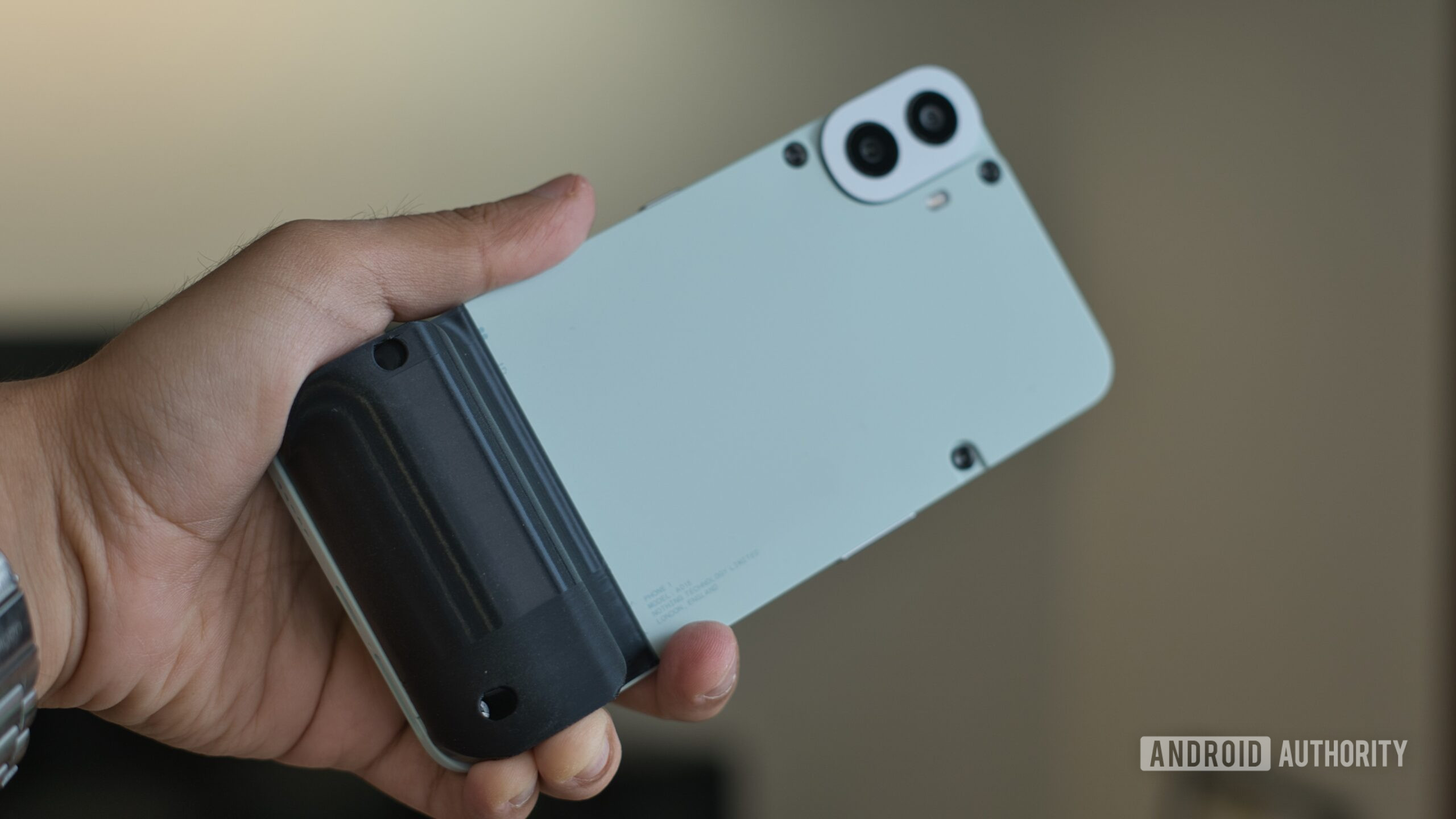
I’d be pretty satisfied if that was all that the CMF phone offered, but building modularity around an old-school screw and plastic bits approach has an added advantage. It opens the door for anyone to create their own accessories. A couple of days after the launch of the phone, CMF released the 3D CAD files for the rear panel of the phone, allowing community members to 3D print their own accessories — a boon for a tinkerer like me!
I reached out to a friend to 3D print a camera grip for the phone, and within hours we were able to create an accessory that fits like a glove while adding utility. It’s magical. In fact, I’m already looking at designing a headphone winder accessory to securely tuck away a pair of wired earphones at the back of the CMF Phone 1.
Opening up the designs for the back panel, and the screw-in approach makes it easy for anyone to 3D print accessories for the CMF Phone 1.
To spur adoption, CMF has also launched a 3D printing competition at Maker World. A cursory glance at the submissions showcases a robust array of innovative projects. Members of the community have already released schematics for a back panel that lets you attach Lego bricks to the phone, a set of gamepad-style grips, a holster for the CMF Buds, and even a folding fan. There’s also the usual array of aesthetic back panels. For the first time in the history of modular phones, the possibilities are truly endless.
Some might lament the lack of wireless charging or Qi2 support, which would open up the CMF Phone 1 to the existing MagSafe accessory ecosystem. However, despite being an advocate for wireless charging everywhere, I’m glad that CMF went a bit outside of the box. Qi2 would’ve inevitably restricted the ecosystem to first-party accessories and, at most, a few predictable options from third-party vendors. Of course, it goes without saying that using simple screws helps keep costs down as well.
CMF Phone 1: The semi-modular phone done right
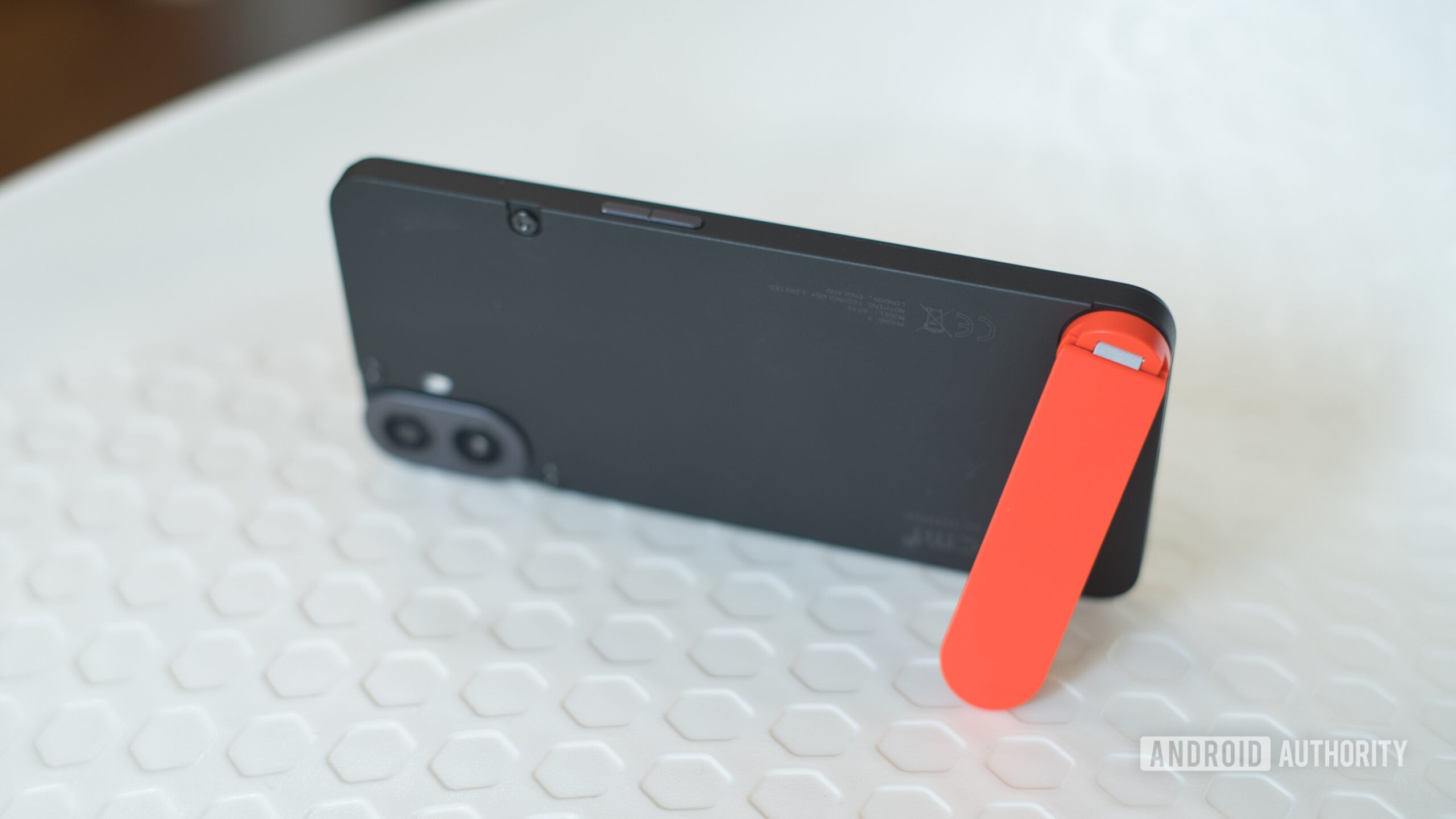
Look, it’s way too early to say that the CMF Phone 1 is paving the way forward for modular phones. It’s impossible to predict how long CMF will support the screw layout on future iterations of its phones too. In fact, the company has made no commitment whatsoever to carry forward with this design. However, it’s tough to deny that it’s created something exciting here that appeals to the geeks who are bored of simple slab phones and predictable accessories, and just want to think outside the box and build fun things.
By open sourcing the back panel design, CMF has virtually guaranteed years of support for its modular phone.
By open-sourcing the design of the panel, CMF has effectively guaranteed that there will be no dearth of accessories for us to tinker around with, even if the company opts for a whole new configuration — or no configuration — with its next phone. That’s ingenious. As an enthusiast who loved Moto Mods, I know CMF’s approach isn’t as technically appealing as what Motorola achieved almost ten years ago. However, credit is due where it’s due, and, for once, Carl Pei’s manifesto of making tech fun again has literally lived up to its hype.